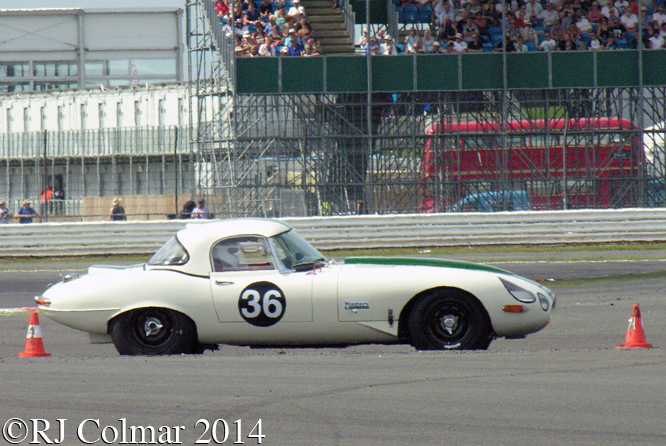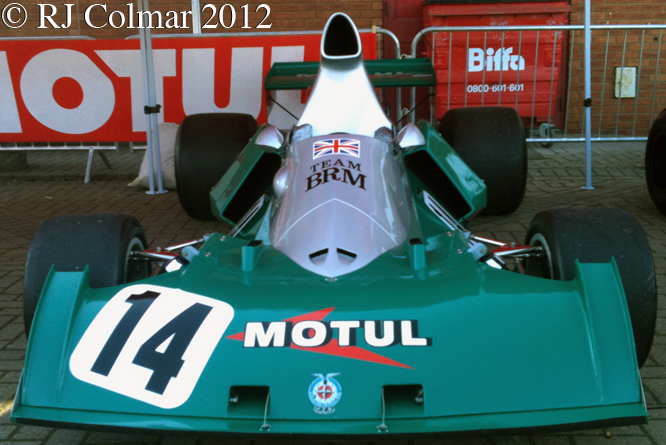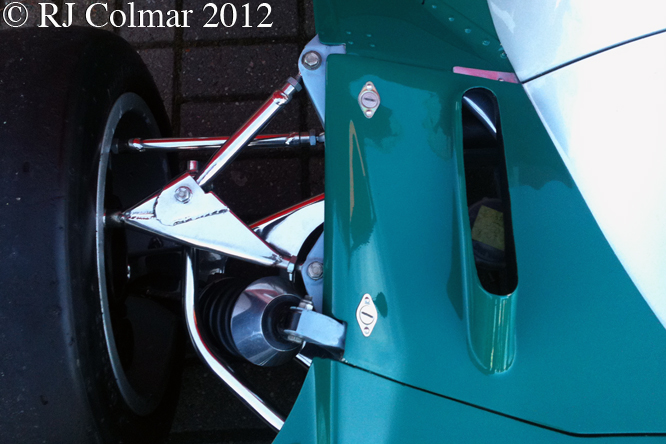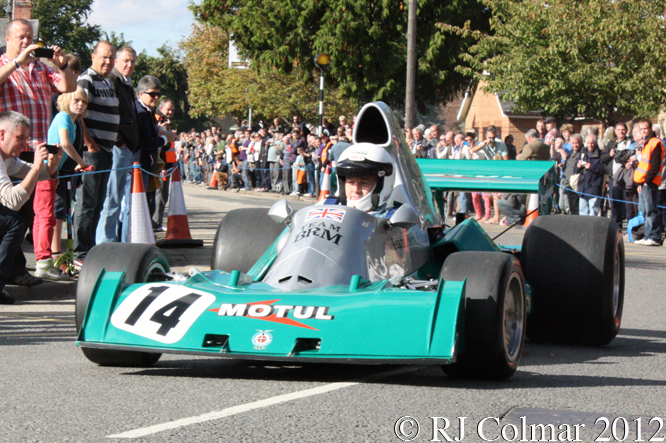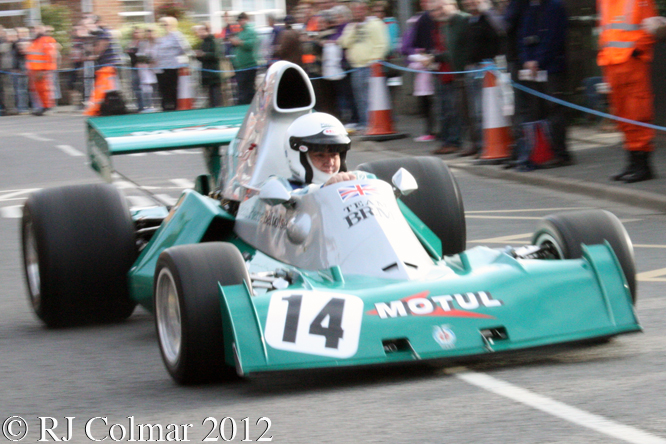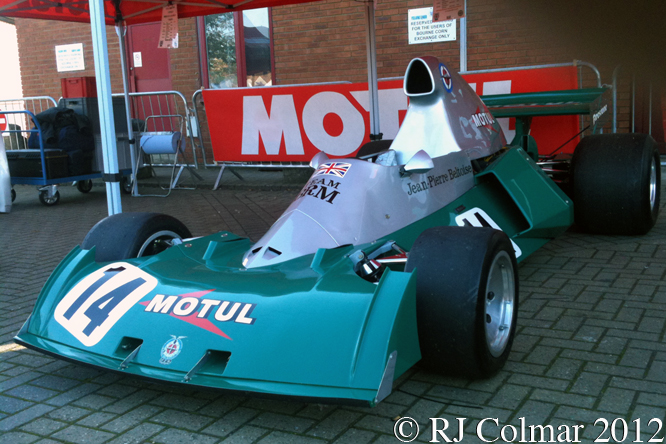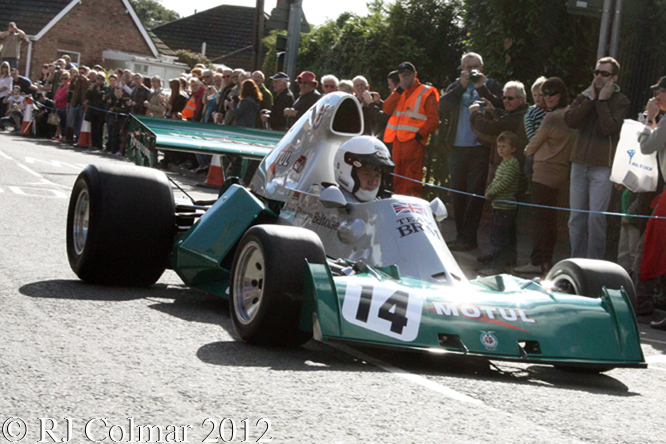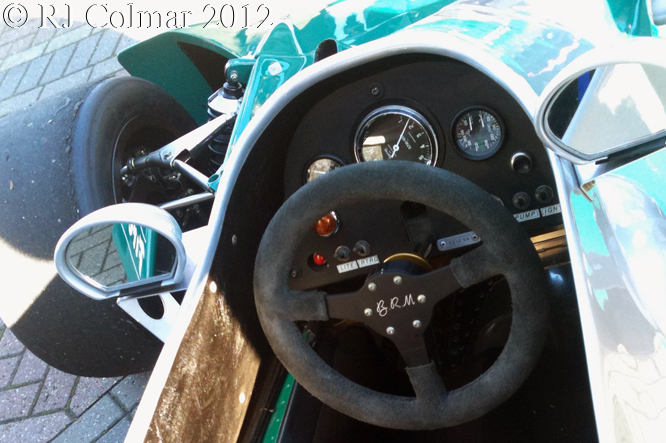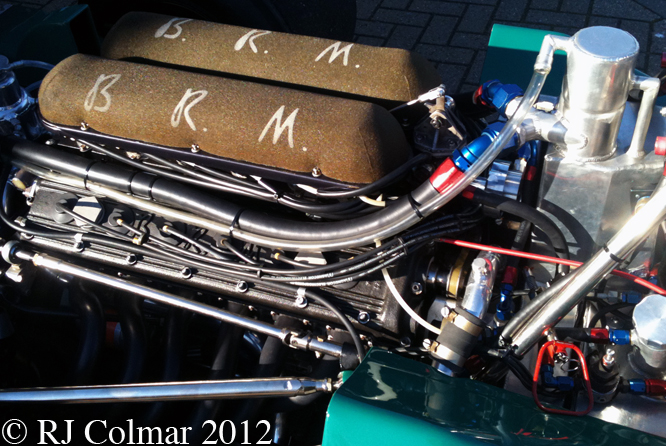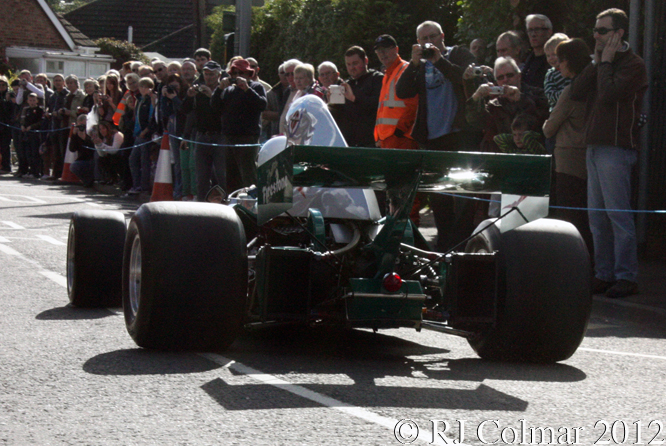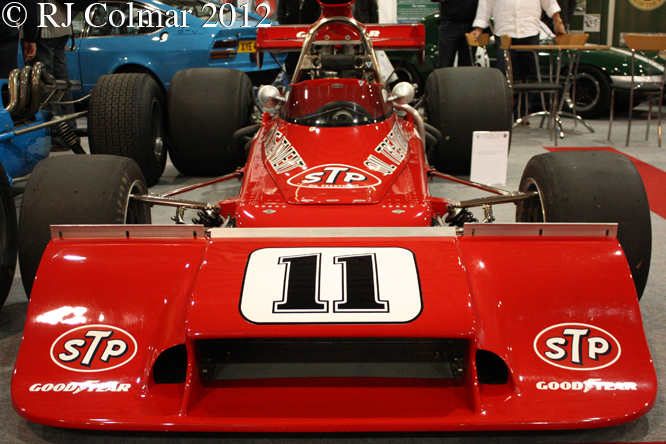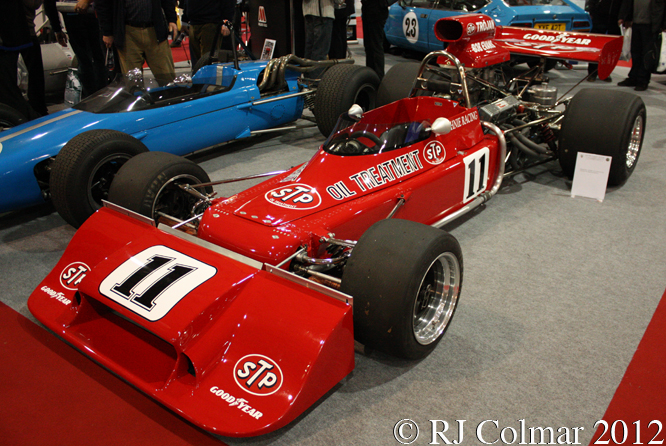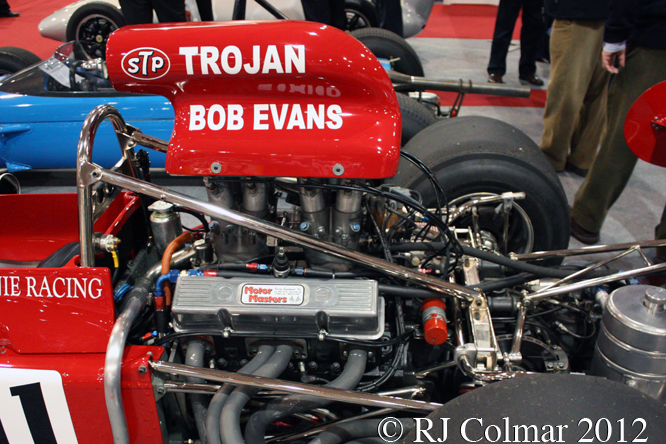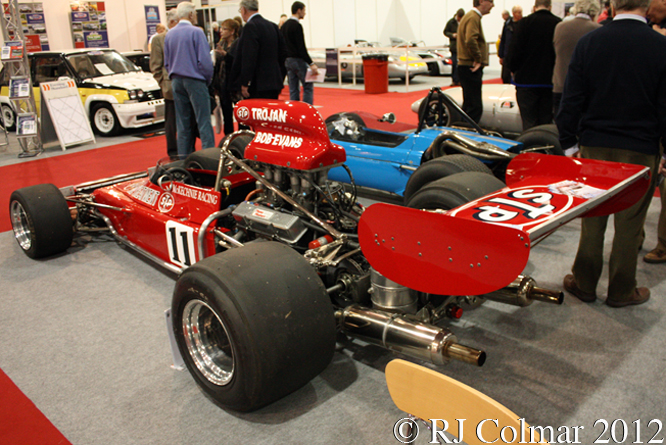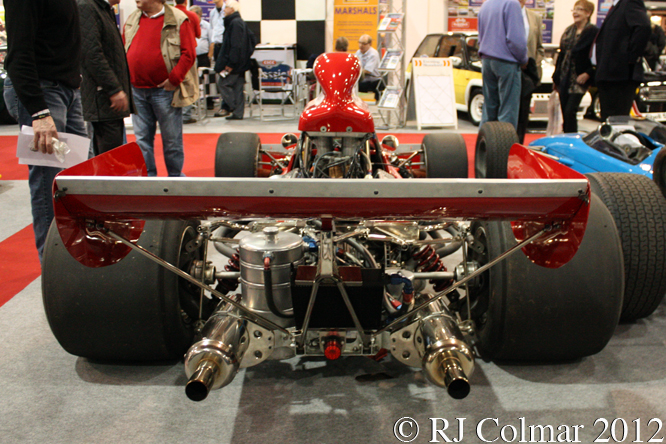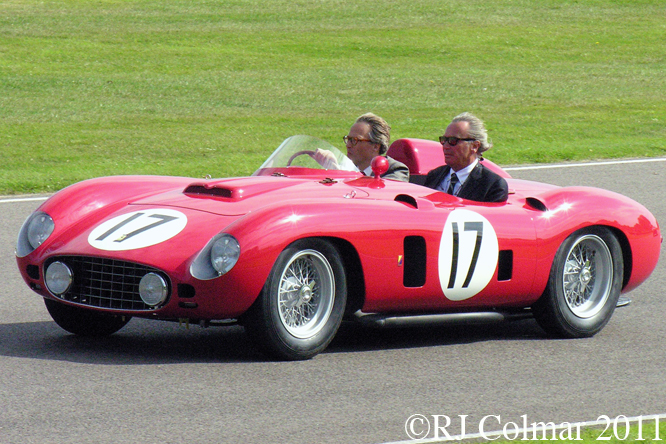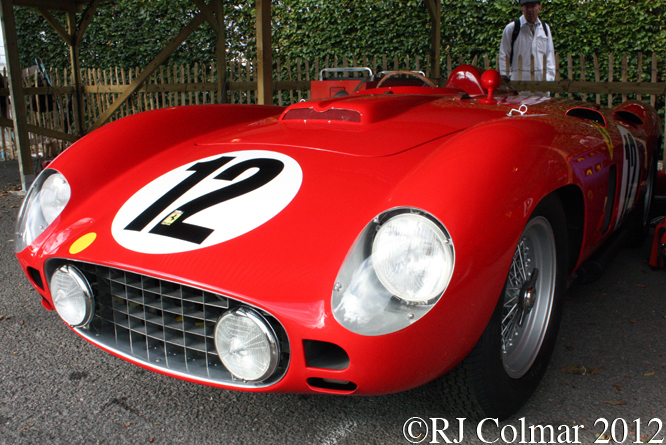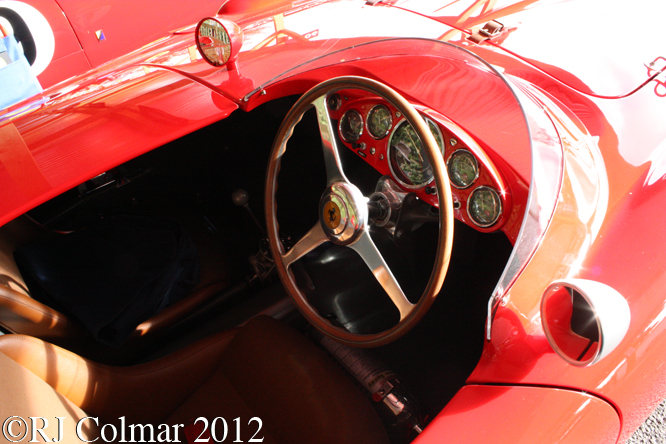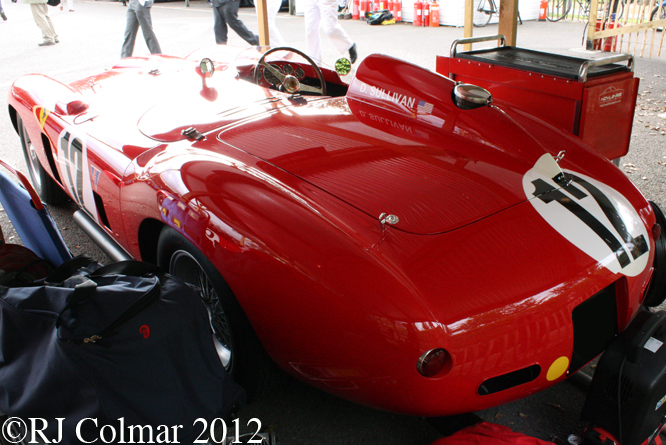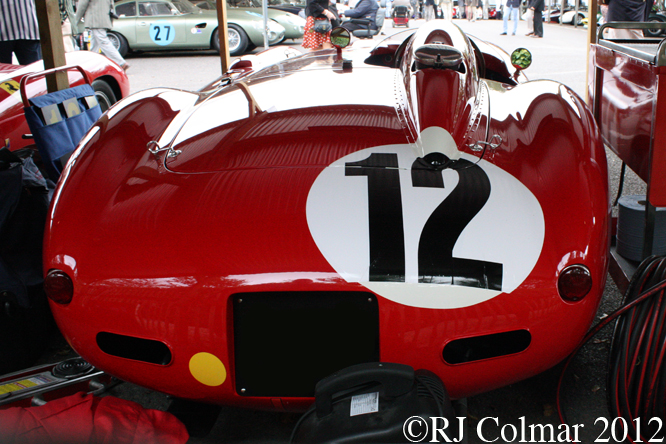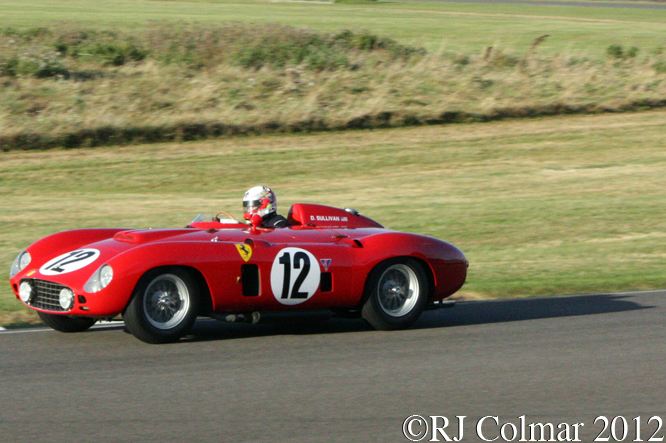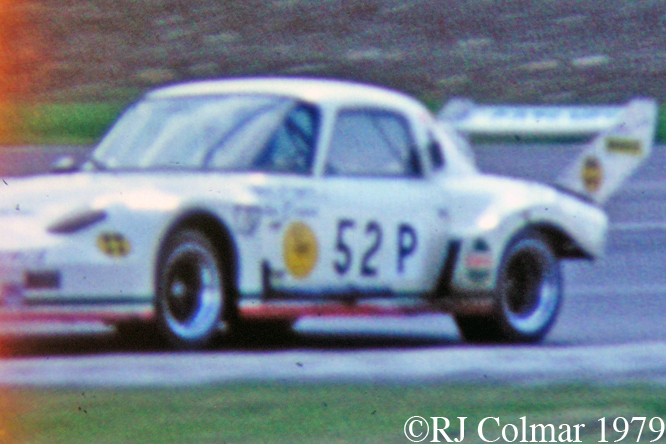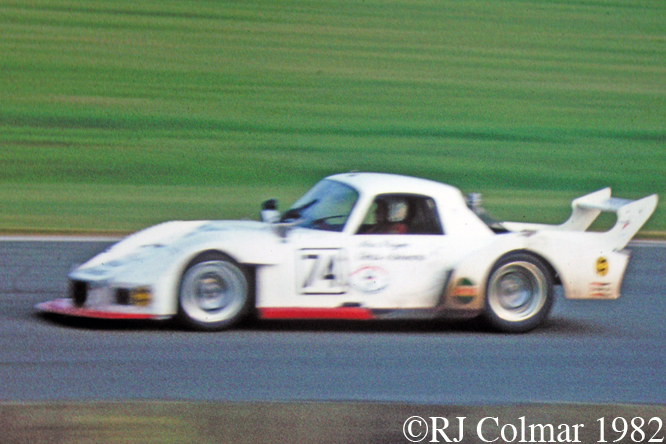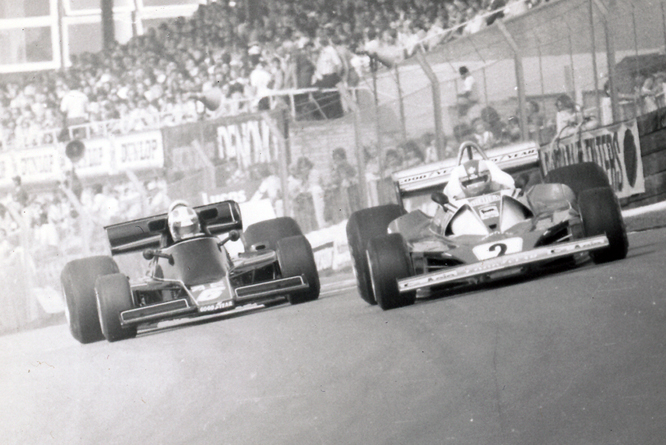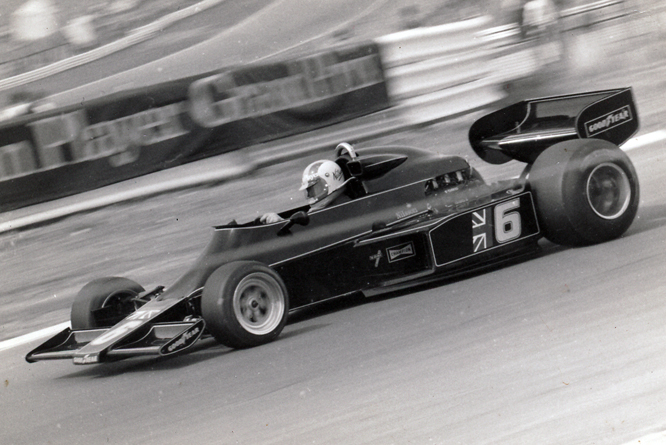On Bank Holiday Monday two friends and I braved some atrocious weather as we headed 150 odd miles North to Oulton Park for the last day of the Gold Cup meeting.

By the time the racing got started the track had dried out a bit though the track conditions were still treacherous as Tony Sinclair drove his #12 Lola T292 to a comfortable 13 second victory over Sam Carrington Yates driving a Chevron B16 in the second of the weekend’s Martini Trophy contests.

Local pride in the Chevron marque from nearby Bolton was restored by Francois Derassi driving his #66 Chevron B17 who won the Rodney Bloor Trophy for Classic Racing Cars by 32 seconds over Palliser WDB2 driver Andy Jarvis.

The first of the days Derek Bell Trophy races looked set to go to Micheal Lyons in his blue grooved wet shod Formula 5000/A #74 Eagle FA74 but Richard Evans driving a slick shod Formula 2 #77 March 742 with only 2/5ths the cubic inches and half the number of cylinders of the Chevy Stock block V8 powered Eagle managed to claw back Micheal’s opening lap six second lead to take the win as the track dried out.

The first time I came to Oulton Park in 1985 John Cleland was driving an Opel Monza in the Uniroyal Production Car race. On Bank Holiday Monday he was driving his 1998 #98 Vauxhall Vectra and after all sorts of problems for the Championship contending Honda Accord’s of Stewart Whyte and James Dodd, John won the Super Touring Championship race from the #44 Audi A4 quattro of Paul Smith. James claimed the championship with an impressive 4th place finish from the back of the grid.
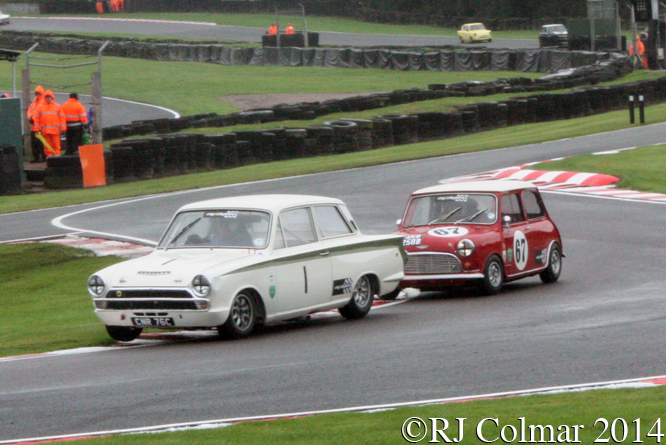
The rain became a little heavier during the first Historic Touring car race and the #67 Austin Mini of Peter Morgan consequently got the best start while the #1 Ford Lotus Cortina of Tim Davies got bogged down. 3 wheeling Tim recovered to take a close victory over Peter by just 0.3 seconds.

By the time the Classic Clubmans came out my friends and I opted to take cover and watch the race from the car. Mark Charteris won the race in the #1 Mallock Mk 20/21 by just over a second from Spencer McCarthy’s Mallock Mk 20b.

The inclement weather continued during the Historic Formula Ford 2000 race which was won after a good battle by Benjamin Tusting in the yellow #64 Reynard SF79 by just under 4 seconds from Benn Simms in the #2 Royale RP30.

The biggest field of the day started the Historic Formula Ford 1600 race. Micheal Mallock who had spent much of the race in fourth place driving his family #9 Mallock Mk9 came through the myriad back markers on the last lap to claim a victory, possibly the first for this car since the late 1960’s, over John Murphy in the green #3 Merlyn Mk20A.

Tim Barry driving his recently restored Ford GAA V6 powered March 76A suffered broken legs and a broken wrist in a nasty accident which stopped the second Derek Bell Trophy race.
The latest news from the hospital is that Tim has already asked doctors when he can drive again ! I am sure you will join me in wishing Tim and his March a speedy recovery.
After the restart Micheal Lyons did not put a foot wrong in his Eagle to claim victory over his nemesis from race one Richard Evans. 1974 Gold Cup winner Ian Ashley marked his return to the F5000 category after an absence of 35 years by driving his Lola T300 to a fine third, having finished 4th in the earlier race.
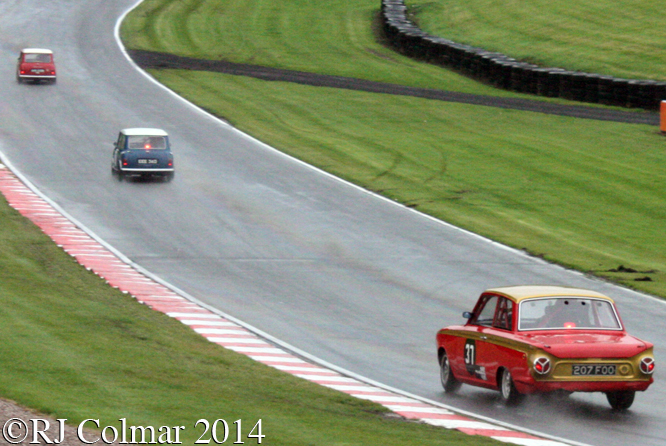
The rain only got heavier during the 2nd Historic Touring car race and the tarmac from Knickerbrook up Clay Hill got a lovely pearlescent finish courtesy of Ian Brown’s Volkswagen Beetle which dumped all of it’s oil on the racing line on lap 2.
The consequent scrabble for steerage and traction proved highly entertaining and it was the red and blue Mini’s of Peter Morgan and Tim Harber who made the best of it with the #37 Ford Lotus Cortina of Mike Gardiner coming home third to round out an entertaining day at the races.
Thanks for joining me on this Rainy Day Grooves edition of “Gettin’ a li’l psycho on tyres” I hope you will join me again tomorrow when I’ll be going for a little test drive in a 35th Anniversary Ford Mustang. Don’t forget to come back now !




